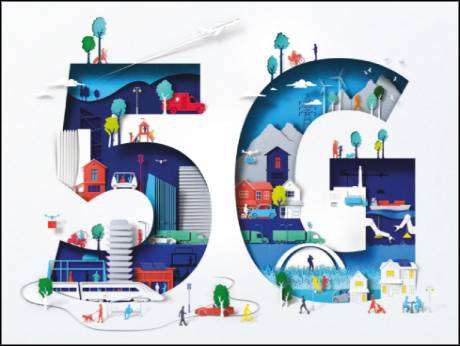
February 21 2021: Nokia MBiT or Mobile Broadband Index Index is a report on mobile broadband performance in India. It aims to provide valuable insight, data and analysis on mobile broadband and traffic growth in India, by co-relating these trends with various demand and supply-side drivers of the connectivity ecosystem such as handsets, devices, content, subscriber usage patterns and network investments by mobile operators.
The 2021 says:
As India is gearing up to embrace 5G, demand for robust mobile and data connectivity amid COVID-19 has led technologies such as fixed wireless access (FWA) to emerge as a cost-efficient broadband alternative driving digitalization.
With ~60x traffic growth in last 5 years and 13.5 GB avg. data usage per subscriber per month, India stands tall amongst the mature markets
Overall data traffic increased by 36% in 2020 due to continued 4G consumption, while 3G data traffic showed its highest ever decline of 56%
4G constituted 98.7% of total data traffic consumed across the country; category A & B circles accounted for 76% of total data traffic
Overall avg. data usage per month registered a CAGR of 76% from 2015-2020 reaching 13.5 GB in December 2020
4G device base reflected a continuous growth of 20% in 2020. VoLTE handsets support grew to 93% of unique 4G devices
With ~5 hours of daily time spend on smartphones, India is one of the highest consumers of data per day, surpassing China; short videos have emerged as the fastest growing content category
With only 22 mn fixed broadband subscribers, India poses significant growth opportunities both in terms of FTTx and FWA to generate a new revenue stream for operators
Link to full Nokia MbiT
Analyst Faisal Kawoosa of TechArch analyses the Nokia MBiT2021:
Ever since I got an exposure to Nokia’s MBiT or Mobile Broadband Index report, which it comes out every year with to reveal some very interesting insights that define the telecom journey in India, I have been writing about this report to explain some key aspects touched in the report. It is not necessary that these are directly talked about in the report, so we do our own analysis on top of the report findings.
This year again the report has come out with some interesting insights. One of the key findings of the index is that data usage is growing at an exponential rate, especially after 4G came into the picture in India.
The report shows how the per user data consumption in a month has gone from 805 MB in 2015 to 13.5 GB in 2020. This has essentially spiked after 2017, when India started witnessing data consumption boom after Jio forayed its 4G services. Now the question remains, if 4G is performing so well, why do we need 5G? We get this answer in the next graphics.
If we look at the change in the subscriber numbers by each circle category, we can find that there are only 607,989 subscribers added over a period of one year, comparing Nov 2019 and Nov 2020 TRAI data. At the national average of 13.5 GB addition per user per month, this means, the new users are adding a little over 8.2 Peta Bytes of data. In Metro and Category A circles, instead of adding to the data consumption, we witness a negative net impact considering the subscriber churn.
On the other side, in Cat B and C circles, not only are subscribers getting added, we are also seeing the data usage increasing. This simply means these circles are also following the metro and Cat A trend, though catching up late. This means users across the country will require more capacity in networks to continue consuming at the increasing rate, they are presently
The users are increasingly adopting more and more smart devices and are moving beyond just smartphones. 1 in every 5 users in India wants to own at least 7 smart devices. This means that the data usage per subscriber is only going to grow further. Also, the device density will increase as a single consumer will have several connected devices. At the same time, the expectations in terms of consuming ultra rich and immersive content will mean more data consumption for the present use cases ranging from online education to healthcare, besides entertainment and gaming.
5G seems to be the only logical way forward of this data progression, which besides being able to enable low latency use cases, it can also theoretically handle millions of devices than in a geographic range than 4G which can handle a few thousand devices.
The trend of existing users consuming more data, 4G almost serving now entire country, consumers wanting to buy more and more smart connected devices, and users wanting ultra rich and immersive content for richer experience; all signify the need of having eMBB or enhanced mobile broadband services for individual consumers, which can only be delivered over 5G.
At the time of 4G, we could perhaps ‘afford’ to go slow and deploy the networks in a phased manner where even after 5 years of commercial launch of 4G, we are still investing in 4G in rural areas expanding the footprints. However, in the case of 5G, the aspirations have changed where users of rural as well as urban India have same requirements, which have narrowed after the covid-19 surfaced.
The trends identified by Nokia’s MBiT 2021 report complimented with addon analysis is only emboldening the need of having 5G in India as early as possible. It would be great to see some activity in 2021 itself, but it should be not be beyond 2022, for which we all shall have to work together.